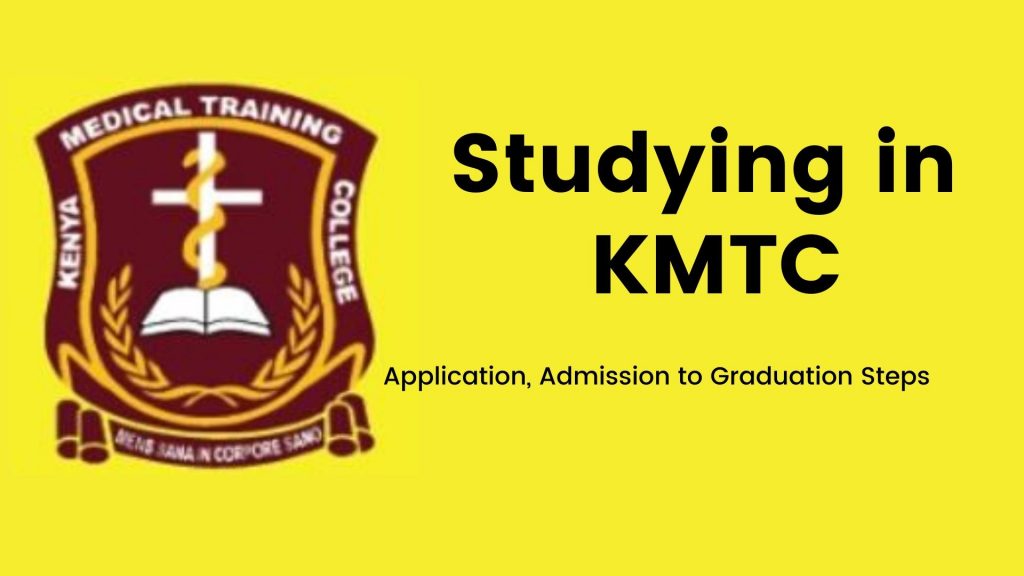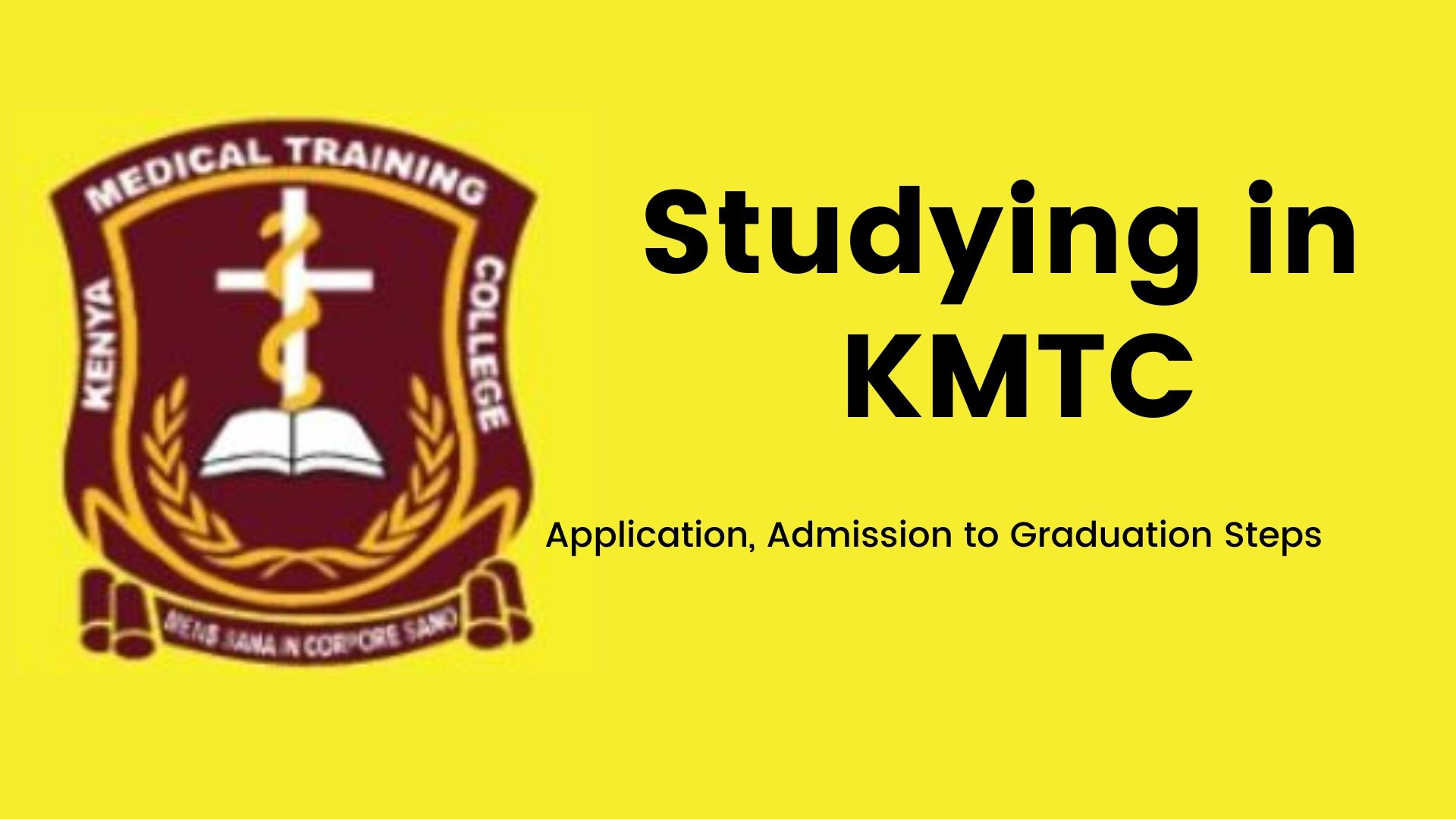Below are step-by-step guides of studying at KMTC Kenya. From application, and admission to graduation.
About KMTC Kenya
Kenya Medical Training College (KMTC) is one of the largest higher institutions of learning in Kenya that offers medical-related courses. KMTC has a number of campuses distributed across the country in various counties.

KTMC Admission
For one to be admitted and pursue a diploma course in KMTC, he/she has to attain a minimum of C (plain) with specific qualifications of subjects depending on the course of choice.
KMTC Intakes
When intakes are advertised applications are done online via kmtc portal (learn how to apply for kmtc admission). Applications have to be accompanied with a non-refundable fee of shillings 2000 paid via Mpesa Paybill or Bank.
Most campuses have intakes in September but some have both September and march intakes of every year.
KMTC Admission Selection criteria
The selection of students to join KMTC is done randomly for those who meet admission requirements and those who have been placed are required to download admission letters from KMTC admission portal. Admission letters contain details like the course, duration of the course and the campus placed.
KMTC School Fees
School fees vary from one academic year to another. However, the estimated average fee is Kenya Shillings 80,700 per academic year for regular students and Ksh. 120,700 per academic year for self-sponsored students. The fee is exclusive of the Accommodation costs as you have to pay at the campuses where you have been placed.
You are required to pay fees for the whole academic year for first years but continuing students can pay per semester.
Students are also required to clear their fees before they sit for their exams.
KMTC Accommodation
Accommodation is available but not guaranteed that each student can get. It is given on a first come first serve basis for students who have completed paying their school fees.
Academic Year
In an academic year, there are two semesters with long and short holiday. A long holiday has a break of 4 weeks (August) while a short holiday has a break of 2 weeks (December).
Class Transition Requirements
For one to move from one class to another he/she has to attain a pass mark given which is a minimum of 50% in each subject learned. Failure to attain the pass mark requires the student to re-sit for a supplementary examination for the subjects failed. If no improvement in 2 subsequent exams then he or she is advised to repeat that year of study.
Final qualifying examination and Graduation
There is a final qualifying examination (FQE) done at the end of 3 years of study. For nurses, it is 3 and a half years. Failure to attain the required FQE pass mark necessitates the student to do a supplementary exam. After passing the supplementary examination, one can join other students in graduating.
Being licensed to work
For a KMTC graduate to work in Kenya as a nurse, clinical officer, pharmacist or pharmaceutical technologist laboratory technologist, radiologist/ sonographer, etc he or she must be certified by respective licensing boards by doing a board examination. Some of the licensing boards include;
- Clinical Officer – Clinical Officer Board (COC)
- Pharmacy – Pharmacy and Poisons Board (PPB)
- Nurses – Nursing Council of Kenya (NCK)
- Laboratory technician – Kenya Medical Laboratory Technician and Technologist Board (KMLTTB)
- Imaging sciences – Radiation Protection Board (RPB)
That marks the end of your KMTC study life. We have detailed articles and tutorials on KMTC Admission application process, COC portal user guide, PPB license registration guide e.t.c

Leave a Comment